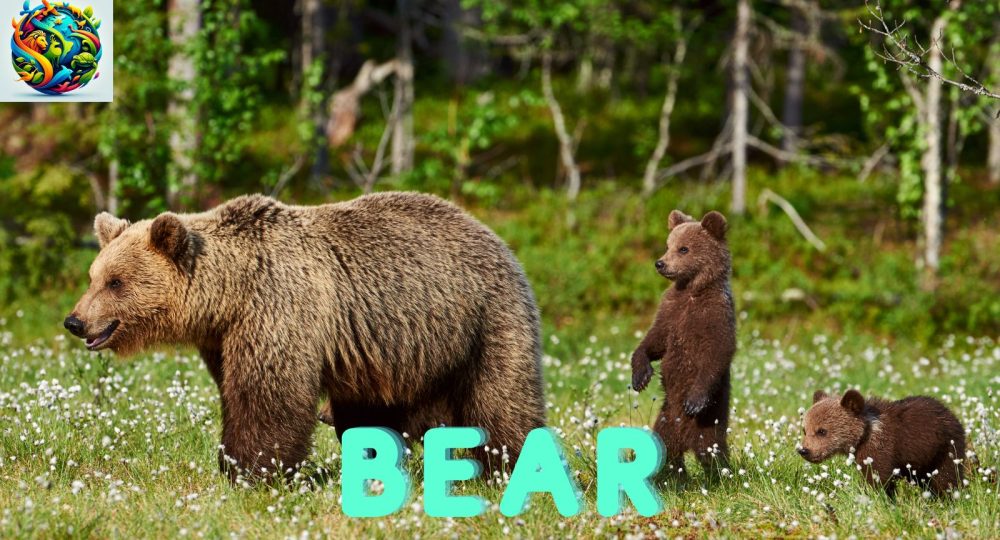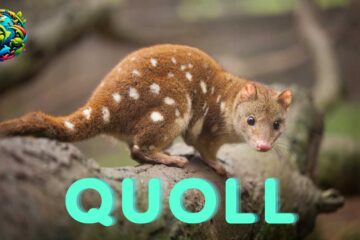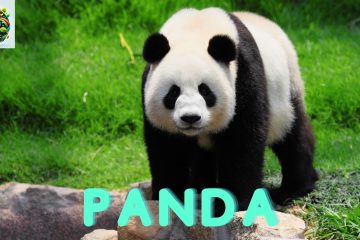
Bears: The Mighty Omnivores of the Wilderness
Bear: Majestic Giants of the Wilderness
Introduction
The bear, a powerful symbol of strength and resilience, is one of the most iconic animals in the wild. Found across North America, Europe, and Asia, these majestic creatures play a crucial role in their ecosystems. With their impressive size, intelligence, and adaptability, they have fascinated humans for centuries. This article explores their world, covering their habitats, physical characteristics, behaviors, and much more.
Amazing Facts
They possess numerous intriguing attributes:
- Diverse Diet: They are omnivores, with diets ranging from fruits and nuts to fish and small mammals.
- Hibernation: Many species hibernate during the winter months, surviving on stored body fat.
- Strong Swimmers: Some species, like the polar bear, are excellent swimmers, capable of covering long distances in search of food.
- Communication: They communicate through vocalizations, body language, and scent marking.
- Longevity: In the wild, bears can live up to 25 years or more, while in captivity, they can live even longer.
Habitat and Food
They are highly adaptable and thrive in various environments, reflecting their versatility and resilience.
Habitat:
- Found across North America, Europe, and Asia, bears inhabit diverse environments, including forests, tundras, mountains, and grasslands.
- They prefer areas with abundant food resources and adequate cover for denning and raising their young.
- Different species have adapted to specific habitats, from the dense forests of the American black bear to the icy realms of the polar bear.
Food:
- Omnivorous, with diets that include fruits, nuts, berries, roots, insects, fish, and small mammals.
- Some species, like the polar bear, are primarily carnivorous, relying heavily on Seals for sustenance.
- They have a keen sense of smell, allowing them to locate food over great distances.
Appearance
They are known for their impressive and distinctive appearance. Key characteristics include:
- Size: Varies greatly among species, with the polar bear being the largest, weighing up to 1,500 pounds (680 kg), and the sun bear being the smallest, weighing around 150 pounds (70 kg).
- Color: Coat color ranges from black, brown, and blonde to white, depending on the species and region.
- Build: They have large, muscular bodies with strong limbs adapted for climbing, digging, and swimming.
- Face: They have broad heads with small eyes and ears, and a keen sense of smell.
Types/Subspecies of Bears
There are eight recognized species, each with unique traits and adaptations to their specific environments:
- American Black Bear (Ursus americanus): Found across North America, known for its diverse coat colors and adaptability to various habitats.
- Brown Bear (Ursus arctos): Includes subspecies such as the grizzly bear and Kodiak bear, found in North America, Europe, and Asia.
- Polar Bear (Ursus maritimus): Inhabits the Arctic region, known for its white coat and reliance on sea ice for hunting seals.
- Asian Black Bear (Ursus thibetanus): Found in Asia, recognized by its black coat and distinctive white chest patch.
- Spectacled Bear (Tremarctos ornatus): Native to South America, known for the white markings around its eyes, resembling spectacles.
- Panda Bear (Ailuropoda melanoleuca): Native to China, known for its black and white coat and specialized diet of bamboo.
- Sloth Bear (Melursus ursinus): Found in the Indian subcontinent, recognized by its shaggy coat and diet of insects.
- Sun Bear (Helarctos malayanus): Inhabits Southeast Asia, known for its small size and distinctive chest patch.
Predators and Threats
Despite their size and strength, they face various natural and human-induced threats that impact their survival.
Natural Predators:
- Large Carnivores: In some regions, cubs may fall prey to large predators like Tigers and Wolves.
- Human Hunting: Humans are the primary threat to bears, hunting them for their fur, meat, and body parts used in traditional medicine.
Threats:
- Habitat Loss: Urban development, deforestation, and climate change reduce available habitats.
- Human-Wildlife Conflict: They often come into conflict with humans when they raid crops, livestock, or garbage, leading to retaliatory killings.
- Poaching: Illegal hunting for parts, such as gall bladders and paws, driven by demand in traditional medicine.
- Climate Change: Particularly impacts polar bears, as melting sea ice reduces their hunting grounds.
Mating
They exhibit unique and complex mating behaviors, essential for the continuation of their species.
- Breeding Season: Typically occurs once a year, with timing varying by species and region.
- Courtship Displays: Males engage in courtship behaviors such as vocalizations, scent marking, and physical displays of affection.
- Gestation and Birth: After a gestation period of about 6 to 9 months, females give birth to one to four cubs in dens, which are often hidden in thick brush or caves.
- Parental Care: Mothers are highly protective of their cubs, teaching them survival skills until they are old enough to fend for themselves. Cubs stay with their mothers for about 1.5 to 2.5 years.
How They Communicate
They use various methods to communicate with each other, particularly during mating and social interactions.
Vocalizations:
- Growls and Roars: Used to communicate aggression, establish dominance, and ward off threats.
- Whines and Moans: Used between mothers and cubs to communicate needs and reassurance.
- Huffs and Snorts: Used during close-range interactions to express curiosity or mild aggression.
Body Language:
- Posturing: They use body postures, such as standing on hind legs, ear positioning, and facial expressions, to convey dominance, submission, or readiness to mate.
- Paw Swipes: Used during play or combat to establish dominance and social hierarchy.
Chemical Signals:
- Scent Marking: They use scent glands located on their feet and bodies to mark territory and signal reproductive status.
Religious and Cultural Significance
They hold significant symbolic and cultural importance in various societies:
Native American Cultures:
- Spiritual Symbol: Many Native American tribes view them as symbols of strength, courage, and protection, often featuring prominently in myths and ceremonies.
- Totem Animals: They are considered totem animals, embodying the traits and virtues of the people or clans they represent.
Modern Symbolism:
- Conservation Icon: They are often used in conservation campaigns to raise awareness about wildlife protection and the importance of preserving natural habitats.
- Popular Culture: These animals appear in various forms of media, from literature and art to movies and television, symbolizing wilderness, power, and resilience.
Movies Featuring These Majestic Creatures
Bears have been the central focus of numerous feature films, documentaries, and nature films, showcasing their behaviors and the challenges they face:
- “The Bear” (1988): A film that follows the life of an orphaned cub and its interactions with a male adult, highlighting themes of survival and adaptation.
- “Grizzly Man” (2005): A documentary that explores the life and tragic death of Timothy Treadwell, who lived among grizzly bears in Alaska.
- “Brother Bear” (2003): An animated film that tells the story of a young boy who transforms into a bear and learns important life lessons through his experiences.
- “Planet Earth II” (2016): The “Mountains” and “Islands” episodes include stunning footage of them in their natural habitat, showcasing their interactions with other wildlife.
- “Bears” (2014): A documentary by Disneynature that follows a family of brown bears in Alaska, highlighting their struggle to survive and raise their cubs.
Pronunciation in Different Languages
The term for these majestic creatures is pronounced differently across various languages, reflecting linguistic diversity:
- Spanish: /oso/
- French: /ours/
- German: /Bär/
- Italian: /orso/
- Mandarin Chinese: /熊 (xióng)/
- Japanese: /熊 (kuma)/
- Russian: /медведь (medved’)/
- Arabic: /دب (dubb)/
- Hindi: /भालू (bhālū)/
FAQs
Q: What do bears eat? A: They are omnivores, with diets that include fruits, nuts, berries, roots, insects, fish, and small mammals. Some species, like the polar bear, are primarily carnivorous and rely heavily on seals for sustenance.
Q: Where do bears live? A: They inhabit diverse environments across North America, Europe, and Asia, including forests, tundras, mountains, and grasslands. They prefer areas with abundant food resources and adequate cover for denning and raising their young.
Q: How do they communicate? A: They communicate through vocalizations such as growls and roars, body language including posturing and paw swipes, and chemical signals like scent marking.
Q: Are bears endangered? A: While some populations are stable, others face threats from habitat loss, human-wildlife conflict, poaching, and climate change. Conservation efforts are essential to protect vulnerable populations.
Q: What is unique about their reproduction? A: They typically have a breeding season once a year, with males engaging in courtship displays and territorial battles. After a gestation period of about 6 to 9 months, females give birth to one to four cubs in dens. Cubs stay with their mothers for about 1.5 to 2.5 years.
The bear symbolizes the beauty and resilience of the wilderness, playing a vital role in its ecosystem and human culture. This exploration highlights their unique traits and behaviors, celebrating the complexity and charm of these remarkable giants.






